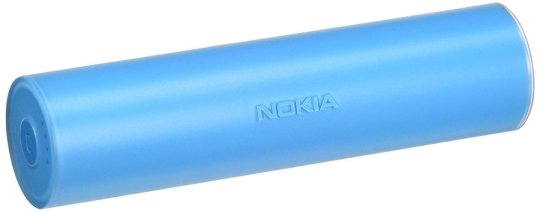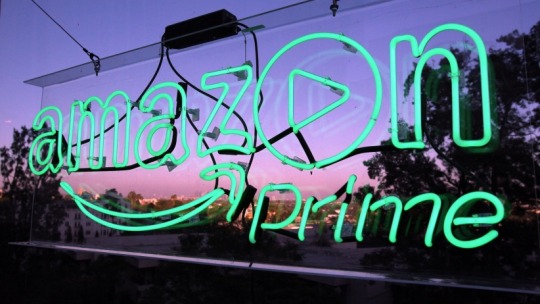Don't wanna be here? Send us removal request.
Text
Nokia Universal Power Bank Emergency USB Charger 3200 mAh

About The Product
Power on the go Running low? Simply plug the DC-19 into your phone and keep on browsing, chatting and socializing with this no-hassle portable charger (like GOAL ZERO SWITCH 10 MULTI-TOOL KIT ). Fill your smartphone's battery to the brim with a blast from the DC-19 portable charger with a 3200 mAh battery capacity. It carries so much juice that even after a full top-up, there's more to give. Up a mountain or on the bus, keep your phone fully fueled wherever you are with a portable charger that fits in your pocket. Quick charging The power hits your phone battery fast, so there's no waiting around. And you'll always know what's left in your charger's tank with at-a-glance LED energy indicators. Recharge Micro USB devices Recharge any micro-USB device and then refill the DC-19 using a USB power supply.
Product Specifics
Nokia Super Charger Made With Water-Resistant Material
Compatible With Devices Supporting USB Charging
Micro USB Emergency Charge Portable Power Bank
Operating keys: Power indicator key; LED indicators: Battery level indicator
Color: Blue
Model - Part Number: C9F-00082
Brand: Nokia
0 notes
Text
Technical Tips and Nice to Know Information about Solar Power Systems

VOLT-AMPS VS WATTS
You often see inverters rated in volt-amps (VA or va) instead of watts. For a perfect resistance, such as a heating element, watts and VA are essentially the same. However, many appliances, especially motors, are not a "perfect" load. Thus, the watts actually used may be less than the VA - but the inverter sees the VA. The motor or appliance may be using only 100 watts, but the inverter sees an "apparent" power of 150 VA.
The difference is due to the fact that in a perfect resistance, the voltage and current are perfectly in sync, but in a load with capacitance or inductance, the current may lag (or lead) the voltage waveform. This results in a higher apparent load to the inverter. In the first few milliseconds of a motor starting, the two may be nearly 90 degrees out of phase - this is the reason for the very heavy startup currents for AC motors. It is also the reason why inverters must be oversized if using large AC motors (but not DC motors).
Many older books and articles recommend using blocking diodes to prevent reverse current flow back through the panel at night ("dark current"). Many others do not (including us, mostly). It actually depends on the situation, but as a general rule in 12 volt systems, you will lose more power from diode losses than you will from leakage back into the panel at night. The situation gets much worse at higher temperatures with crystalline panels. All regulators (charge controls) have built-in blocking circuits. About the only case where a blocking diode might be needed is with small thin-film panels, such as the Unisolar US-5 or Siemens ST5, where the panel is connected directly to the battery. Diode losses are much less in higher voltage systems, such as 48 volts. Blocking diodes and bypass diodes are NOT the same thing. Often the actual diode type is the same, but serve different purposes. See the illustration below for examples of each.In this diagram, the two diodes at the END are the blocking diodes, which prevent reverse current flow at night. These are seldom needed in systems with controllers, as nearly all charge controllers have a built in method of preventing reverse current.The diodes ACROSS each panel are the bypass diodes. Most medium and larger panels come with these already installed. The purpose of bypass diodes is to shunt the current around a shaded, weak, or damaged panel. If the full current passes through a shaded or weak panel, overheating and damage may occur. Bypass diodes are not needed on 12 volt systems, optional on 24 volt, and should always be used on 36 volt or higher systems. See also our tip below on shading.
CHARGE CONTROL AND BATTERY CHARGER SETTINGS FOR BATTERIES
Nearly all batteries used in solar and backup systems are Lead-Acid. There are some differences that you should be aware of to get optimum performance and life from your batteries. Some charge controls have settings to choose between "flooded" and "Sealed" batteries. This has caused quite a bit of confusion with the newer AGM (absorbed glass mat) batteries. Since gelled need to be treated more gently than the flooded or AGM (such as Concorde PVX/LifeLine), most controllers make the assumption that all sealed batteries, are GELLED. Not so! - All of the AGM batteries that we sell should use the "Flooded" setting if there is no setting for AGM (unless recommended specifically otherwise by the manufacturer), which is typically about 2/10ths of a volt higher than the voltage setting for gelled. Also, if your charge controller has a choice, AGM batteries do not need nearly as much equalization as flooded, and most only need equalization about 2 or 3 times a year. Since AGM batteries do not have liquid, there is no stratification in the cells.HEAT VS SOLAR PANEL OUTPUTAll solar panels lose power at higher cell temperatures. This is why most panels are designed for 16.5 to 17.5 volts output at room temperature - when the panel cell temperatures get up to 150 degrees F or so, voltage output can drop as much as 20%. It is for this reason that we do NOT recommend the so-called "self regulating" panels, such as the Siemens SM46 or Kyocera KC35 for hot climates. These are lower voltage panels, and at hot desert temperatures, output can fall below the 13+ volts needed to charge the battery. In a typical solar panel, about 14% of the sunlight is converted into electricity, 7% is reflected, and the rest is turned into heat - this is why solar panels MUST have space under them for air circulation. It is also one of the reasons why we do not recommend the "solar roofing tiles" - since they are actually part of the roof, they can lead to tremendous heat buildup in the house.Most amorphous, or thin-film, such as Unisolar and the Siemens ST series, have less power loss at high temperatures. Some recent measurements done here in Phoenix in the Summer showed that at an ambient air temp of 109F, that the Unisolar 64 put out about the same amps into the load as the Siemens SP-75, despite the 11 watt higher rating of the Siemens. If you plan on using solar where the cell temperatures will be high, such as the Southwest deserts, we recommend considering the Unisolar over the crystalline panels. The one problem with the Unisolar panels is that due to their overall lower efficiency, the physical size per watt is 50-60% more than a crystalline panel - however, if measured on an "area per delivered amp" basis, there is less difference.
THEFT AND VANDALISM
Because solar panels are somewhat expensive, they are a target for theft in some areas. There is no sure cure for this, but using theft-proof hardware, such as bolts that require special wrenches can help. Often the best prevention measure for both theft and vandalism is to make the solar panels less obvious, especially if they are visible from a major road or highway. It is also a good idea not to "advertise" them - such as one county in California did, by placing large signs up at a roadside rest stop bragging about their use. The panels were gone in a few weeks.It's not like there are hordes of panel thief rings roaming the countryside, but it is something you should be aware of.
SHADE LOSSES IN PV PANELS
All panels (for example: RENOGY 100W ), regardless of what the advertising says, will lose considerable output even if only partly shaded. Some, such as the Unisolar panels, lose less in partial shade, but the output is still reduced. In crystalline panels, when a cell is shaded, it essentially "turns off" that cell, turning it into a high resistance. If a single cell in a panel is shaded, it can reduce or even completely cut off the output of the panel. In some cases, it can also result in overheating of the cell as the unshaded cells try to force current through the high resistance cell. Unisolar panels are less susceptible due to built-in bypass diodes on the cells, but will still lose up to most or all of their power with 15-20% shading due to the voltage dropping below the battery voltage.
0 notes
Text
3 Ways to Make Sure Your Online Ads Aren't a Turnoff

Online advertising sucks. You already know the reasons why: First, there are the visuals -- most ads are ugly and interrupt the browsing experience -- and then there's what ads do to website-load times. Users do everything in their power to avoid those irrelevant, intrusive ads: Nearly 200 million people worldwide use ad-blocking software.
And the result for publishers is almost $22 billion in lost ad revenue.
So, what's a publisher to do? Ad scrollers help. This relatively new format appears as a window, running in line within the content feed. As the user scrolls through an article, the ad moves smoothly and seamlessly on and off the screen.
When mobile-device users were shown the scrollers, 51 percent of those surveyed expressed a favorable view of the brand involved. So one implication here was clear, and crucial: An ad’s placement is just as important (perhaps more so) than aesthetic variables, like copy, color or design.
Location, location, location
When you're trying to raise your ad's profile, remember that every aspect of an ad should scream "cohesion," with each element reinforcing the next. You’d never see Mercedes buying an ad with poor placement and spam copy, nor would you see Tesla releasing an overly intrusive one.
Both companies want to sell a $100,000 car, yet neither display would reinforce a $100,000 mindset.
Your company’s advertising method, then, sends a clear message to consumers about the worth of your wares. Without fail, a bad ad in a premium spot will out-perform a great ad in a spam spot.
Take banner ads: The higher they appear on the page, the more effective they’ll be. The click-through rate of above-the-fold ads is nearly seven times greater than that of ads found farther down on the screen. For young companies on a limited budget, that aspect is extremely important and often worth the effort of buying space at the reader’s eye line.
By the same token, poor ad placement can affect consumer perception. Ads that don’t disrupt the user experience have scored much better than have more intrusive ads. What’s more, ads placed mid-article have scored the lowest. The reason? They interrupt the flow of reading.
Inevitably, those brands advertising in this fashion are seen in a negative light, which lessens public perception of their brands.
No place for steamrolling
A campaign’s success greatly depends on how it affects the audience. If it steamrolls consumers and invades their screens, the message sometimes gets lost. At Benja, we learned that you can improve the customer ad experience by following a few simple rules:
1. Respect the consumer. The time spent on a site will vary by consumer -- and by the day of the week, for that matter. Some say the average time is 15 seconds; others say it’s just shy of a minute. No matter where you fall on that range, know that viewers' time is precious and must be respected.
Consumers visit sites to get information about something other than your brand. Pushing an ad in peoples’ faces not only shows a lack of respect, it shows a total disregard for the user experience. Keep this in mind with your online ads.
Our own ad format enables users to browse and complete transactions within an ad. We don’t take people away from what they’re on the site to do; and that strategy still allows any brand using it to convert consumers into customers.
2. Complement the experience. Personalization is everything. In fact, one-third of marketers say it’ll define the future of marketing. Thanks to recent advancements in digital technology, a message can be customized to a person.
Our company could easily use retargeting to “personalize” ads. All we’d need to do would be to drop a cookie on visitors’ browsers; then an ad would display any time those visitors visited the site of a retargeting provider.
The problem, or problems, with that method, however, is that those ads rarely complement the user experience. They also come off as stalker-ish: Wherever a user goes, some brand isn’t too far behind. Plus, the advertising would be better used for people who have already bought your product.
Accordingly, instead of retargeting, we lean on other available data to make tangentially relevant content. Perhaps the most interesting point is that this practice hasn’t hurt our conversion rate.
3. Consider the click experience. After seeing an ad offering "30 percent off," imagine how irked you’d be if clicking on it took you to a page several steps away from the sale. Jumping through hoops does little more than encourage people to click away -- despite the unfortunate reality that most ecommerce advertisements require the user to take 10 to 20 steps to complete a transaction.
So, make sure your links direct consumers to the right page on your site. Your goal is to bring people closer to, not further from, the transaction. After all, what’s the point of interrupting a sale if that’s your end goal?
A final note: If you feel the need to promote other products or services, do it after the original purchase. Trying to “upsell” before the original buy is completed is a quick way to get consumers to abandon their shopping carts altogether.
The overall message is clear: As with product or service design, keep the consumer in mind when developing your ad. Ponder its placement, and think about how it will affect the user. If you’re not intruding into the consumer’s space and stymieing the experience, you’re already a few steps ahead of many brands.
0 notes
Text
4 Reasons Why Amazon's Product-Search Dominance Matters

Data continues to affirm Amazon.com’s dominance in the product-search industry. In fact, recent studies reveal the Amazon marketplace as the place most American consumers begin their product research. For entrepreneurs in the business of selling products, these trends are causing major shifts in product distribution and marketing.
Here are four reasons why Amazon’s growth in product search matters to you.
1. Amazon shoppers are ‘Primed’ to buy.
The more than 50 million Amazon Prime members seek to extract maximum value from their $99 annual subscription fees. With each new item added to their carts, shoppers can further justify the benefits of participating in the program.
Even among non-Prime shoppers, Amazon’s minimum threshold for free shipping can be as low as $25. Users can log in on any web-enabled device and then research and add items to their carts in a few taps or clicks. Over the course of a few seconds, minutes, hours or even days, customers can mix and match on their own terms. As new needs are identified, Amazon shoppers perform additional product searches and determine when an order is ready to be finalized. After an order is placed, this process repeats itself over and over, further cementing the affinity for Amazon.com.
Compare the Amazon experience to the traditional search model, in which a shopper starts with an idea and could spend hours bouncing among various websites. One site might offer the product the consumer wants but at too high a price. Other sites might feature better pricing but could be temporarily out of stock. Still others might offer the right mix of product and pricing but ultimately fail to deliver a trustworthy checkout process.
For these and many other reasons, consumers are bypassing traditional search engines and turning to the Amazon marketplace for all their product research and acquisition needs.
2. SEO no longer is limited to traditional search engines.
For years, consultants have preached the importance of an optimized web presence across Google, Yahoo and Bing. While these search engines still are important to retail entrepreneurs, it's also noteworthy to acknowledge the growth of Amazon SEO.
Granted, most merchants have less control on the visibility of individual Amazon product listings. Amazon maintains tight control over most product details, particularly when multiple merchants share the Buy Box.
To make an impact, merchants are getting creative. Some common strategies include:
Building kits (or bundles), such as gift baskets
Developing private-label products
Asking for product reviews through proactive solicitation
Amazon seeks to match searchers with the most relevant, trustworthy and sought-after products. Kitted products achieve this by filling a niche with convenience-minded shoppers. Private-label products offer additional choices for the consumer, often providing higher quality at lower prices. Product reviews reduce uncertainty and are the source of truly organic, original content.
Merchants who own the Buy Box on kits and private-label items can achieve a significant uptick in brand awareness among Amazon searchers. They’ll boost their stock even higher by requesting timely reviews from users who completed a purchase. As search traffic expands, savvy merchants position themselves to support the demand.
Related: 10 Steps to Selling Your Product on Amazon
3. Advertising allocations are shifting.
Search engine pay-per-click (PPC) advertising is very effective at driving traffic to a merchant's website. The challenge involves convincing visitors to convert into paying customers.
Branding, user experience, web security and mobile friendliness all can influence a visitor's willingness to buy. Taking this approach, merchants could spend thousands of dollars chasing only a few hundred dollars in initial sales.
As a result, an increasing number of merchants are shifting their advertising budgets toward an Amazon-centric orientation. With the success of the Amazon Sponsored Products program, merchants can expose their listings to purchase-ready searchers. With each click, shoppers remain within the cozy confines of the Amazon marketplace, rather than being redirected to third-party websites. This approach delivers a more cohesive, convenient shopping experience -- and generates traffic with higher conversion rates.
Related: Amazon Rolls Out New Marketplace for Startups
4. Amazon search is leading to increased ‘webrooming.’
Several years ago, the term "showrooming" became a common issue facing brick-and-mortar retail stores. A showrooming shopper enters a store, identifies the items he or she likes, compares prices online and then makes the transaction online (often via a smartphone). Locally owned businesses in particular have struggled with declining sales because of this phenomenon.
Given Amazon’s ever-increasing dominance, online stores are seeing the rise of the reverse problem: “webrooming.” In this scenario, shoppers spend hours reading online reviews for items they intend to purchase in person. Unlike showrooming, which certainly has challenged local retailers, webrooming's impact on Amazon is uncertain at present.
For entrepreneurs in the retail industry, webrooming could have a number of interesting side effects. As an example, consider a regional chain of home-appliance stores. Sales of smaller items such as toasters, microwaves and replacement parts long ago evaporated to the web. But purchases of high-dollar or bulky items (think washers, dryers, water softeners and refrigerators) may now at least be shaped by online reviews. The same is true of any other product customers want to see before they buy.
Related: Is Amazon's First Brick-and-Mortar Bookstore the Future of Retail?
Business owners -- brick and click alike -- must remain vigilant. They need to proactively monitor how their products are perceived on the Amazon marketplace, in particular.
The takeaway: Merchants can leverage this growth opportunity.
As consumers shift more of their product research to the Amazon marketplace, product-focused entrepreneurs face several decisions. While it’s unwise to abandon all off-Amazon strategies, most merchants certainly could benefit from developing a strategy tailored for Amazon search. Diversification of SEO and PPC budgets also could prove to be a competitive advantage, especially when competitors stick to more obvious channels.
0 notes
Text
Why Influencer Marketing Is Great for Your SEO

Many marketers strive to align themselves with influencers because this kind of engagement has been proven to rapidly expand brand visibility for many businesses.
With influencer marketing, a much larger audience is suddenly exposed to your brand, which often results in a significant spike in traffic that can lead to more subscribers, followers, and leads.
An even greater benefit of influencer marketing that some folks miss out on is the long-term SEO improvement. A study conducted by Moz revealed the weight of some significant ranking factors in search, and if you read between the lines, you’ll see how influencer marketing can work to your advantage in organic search.
1. Expanding your link profile.
As much as Google’s algorithm has changed in order to eliminate junk listings from search results, backlinks are still important when it comes to determining your position in the search results. What’s changed with backlinks is how the algorithm scores them, specifically focusing on the source’s authority, quality, and relevancy.
This is a primary reason why guest posting has gained popularity, as marketers and brands create content to publish on the sites of influencers or influential brands.
When you create content with the purpose of generating targeted referral traffic, providing value to an extended audience, and improving your reach, you’re also generating organic and natural links that will enhance your backlink profile in the search engines.
2. Growing site traffic.
I mentioned how influencer marketing can generate significant traffic for your site. This traffic typically comes from referral links, but you could see an increase in direct traffic as well. Backlinko created a list of some 200 ranking factors used by Google’s algorithm, which includes both Direct Traffic and Repeat Traffic as ranking factors. This was confirmed by the Moz study I referenced above, in which traffic is the fifth most influential factor on the algorithm.
Guest posting is just one way to generate traffic. When you form connections and build relationships with influencers, they will share your content across their social channels, where it will be picked up by your audience.
Although social signals do not impact organic search rank, the growth in traffic to your site over time will have an impact on your rank.
3. Bringing the content home.
A good relationship with an influencer isn’t developed quickly, but it can bring a tremendous amount of value once established. While many of the top influencers tend to be incredibly busy, you may be able to get a guest post on your own site from a mid-level influencer with a growing audience.
Once you have that high-value content published in your blog, take the time to promote the content far and wide to both of your audiences. Not only will you gain the benefit of a traffic boost, but that content could also start generating inbound links.
Other people will likely curate that content and link back to it, or quote the influencer in their own posts or to link back to your content to cite facts and statements from the influencer.
4. More visibility with video.
Given that YouTube falls under Google’s umbrella, it’s no surprise that traffic increased considerably after the Google Panda update. Unfortunately, highly relevant and well-trafficked videos might still get preferential treatment in the search results.
Take this as a solid opportunity to work with an influencer to produce more than just blog posts. Diversifying your content not only expands your reach to different audience segments, but it can also give you more of that coveted first page real estate in organic search.
A video interview with an influencer, audio from a podcast, or interview segments divided into slides with striking visuals can give you a significant bump in search visibility. While these efforts won’t contribute directly to the search visibility of your site, it’s always a good idea to have other entry points into your funnel, such as videos.
When the influencer’s audience searches for content related to that influencer, they’ll find your videos optimized and co-branded, which will ultimately give your own brand a lift among those new audience segments.
Every relationship should be reciprocal, whether it’s with your audience or an influencer. Working with an influencer in the ways I listed above can give you a lift in organic visibility, but you shouldn’t approach influencer marketing as a means of “using” or “leveraging” the influencer. The best results will come from a mutually beneficial relationship where respect is established. If you treat them selfishly, influencers will start to ignore you.
A win-win approach creates a stronger relationship, and influencers you engage with will be happy to work with you more often when you reciprocate by helping them expand their own brand visibility and audience.
0 notes